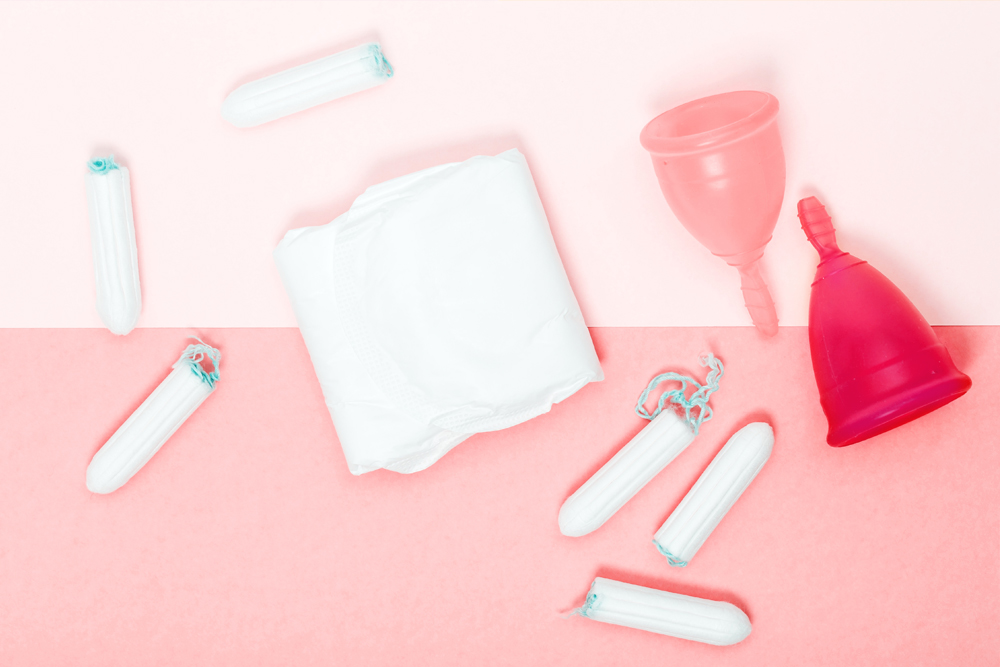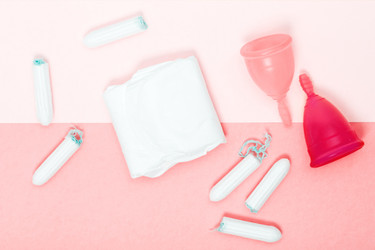Menstrual Pad vs. Tampon vs. Menstrual Cup
Posted by Wombilee on Oct 2nd 2022

There are multiple different types of protection against period leakage. Menstrual pads, tampons, and menstrual cups are the most popular. It's up to you what makes you feel protected and comfortable. It's advisable to try out different options before choosing what works best for you; however, we've compiled all the period products along with the pros and cons to make the selection process easier!
What are Menstrual Pads, and how to use them?
Menstrual pads, also called sanitary pads, sanitary napkins, or feminine pads, are one of the most widely used period hygiene products. It has been a part of markets for a long time. Sanitary pads are rectangular-shaped absorbance placed or stuck inside the underwear, covering the vagina.
Pads are usually disposable, but some companies also deal in reusable pads. To use a sanitary pad, take it out of the packet, peel off the paper strip and stick it inside your underwear. Some menstrual pads also have sticky sides, called wings. Wings provide a better grip and help in avoiding leakage.
Pros and Cons of Using Menstrual Pads
Like all other products, menstrual pads also have various advantages and disadvantages. Some of the main characteristics associated with menstrual pads are elaborated on below.
Pros
• Menstrual pads are easy to use and don't require discomforting insertion.
• They aren't associated with Toxic Shock Syndrome (TSS).
• They are widely available.
• Wombilee's pads are perforated and breathable to help wick away moisture, which avoids the bloody odor during a period.
• Menstrual pads come in different styles and sizes.
Cons
• Pads are visible under various clothing items and might make a wrong impression. Wombilee's pads are ultra-thin and discreet.
• They're typically not reusable.
• They can cause leakage if not placed correctly. But Wombilee pads have a leak guard to combat that.
• Tend to dislocate and can be discomforting during exercise and sleeping
• Menstrual pads should be changed every 3-4 hours, which makes them costly.
• Menstrual pads are not environmentally effective unless they're biodegradable.
• Pads can cause rash, UTIs, or other infections if used for more extended periods.
• It can be a problem if you have a heavy flow rate, but Wombilee's Graphene Heavy Pads hold up to 200 milliliters.
What are Tampons, and how to use them?
A tampon is a cylinder-shaped pad made of cotton which has to be inserted inside the vagina to absorb blood. It has a string attached to one end, which is used to pull it out after use.
A tampon can be inserted into the vagina using fingers or an applicator. Tampons eliminate any foul smell and are comfortable if appropriately placed.
Pros and Cons of Using Tampons
Tampons are easy to use, but several complications come along. Some pros and cons of using a tampon for your menstrual hygiene are as follows.
Pros
• Small, easy to insert, and comfortable if placed correctly.
• It absorbs more blood and can be used during physical exercises such as swimming.
• Very little chance of leakage.
• Readily available in the stores.
• Tampons keep your vagina from smelling bad.
Cons
• Insertion can be uncomfortable, especially if you're new to it.
• It can cause dryness of the vagina, resulting in irritation and itching.
• Tampons are not environmentally friendly.
• Tampons can cost a fortune, as they can't be reused.
• It requires changing every 3-4 hours.
• Tampons cause a risk of Toxic Shock Syndrome (TSS).
What are Menstruation Cups?
Menstruation cups are small foldable cups made of silicone, latex, or rubber inserted inside the vagina to collect menstrual blood. Cups aren't a modern concept, but because of the sustainability crisis, they're being highlighted more than in previous times. The most impressive thing about a menstrual cup is that it is eco-friendly and can be reused for up to 10 years.
Pros and Cons of Using a Menstrual Cup
Menstrual pads and tampons can't typically be reused, unlike menstrual cups. Some pros and cons of this modern eco-friendly product are as follows.
Pros
• Cups hold more blood than most period products.
• They can be worn for more of an extended period.
• They are comfortable once you develop a habit and are effective.
• They don't cause dryness of the vagina.
• Menstruation cups are eco-friendly and can be reused for at least ten years, making them economical.
• They prevent foul smells and other bacterial infections that can be a risk with moisture-capturing pads and tampons.
• It allows you to swim and engage in other physical activities without leaking.
Cons
• It can cause discomfort when used for the first time.
• It can cause allergies in some people.
• It can be messy, as it has to be taken out of the vagina and rinsed using fingers.
• Menstrual cups require thorough cleaning and sanitization.
• It collects blood instead of absorbing it and must be cleaned before reuse.
What menstruation product is the best for me?
Some women prefer cups, while others feel comfortable using feminine pads or tampons. Your choice should solely depend on your comfort and ease. You can decide what's best for you by checking your blood flow, cycle, regularity, and daily activities.
Wash your hands with an anti-bacterial soap before and after using a hygiene product to ensure safety. Also, don't forget to consult a doctor in case of infection or continuous discomfort.

